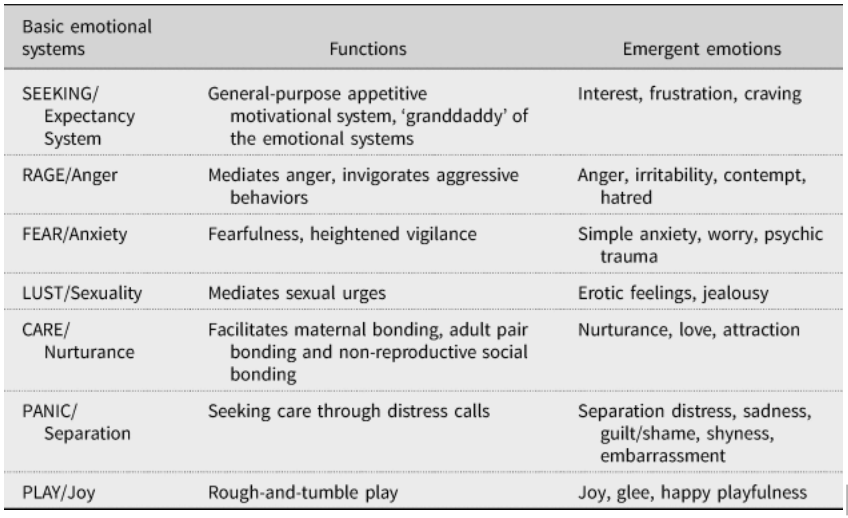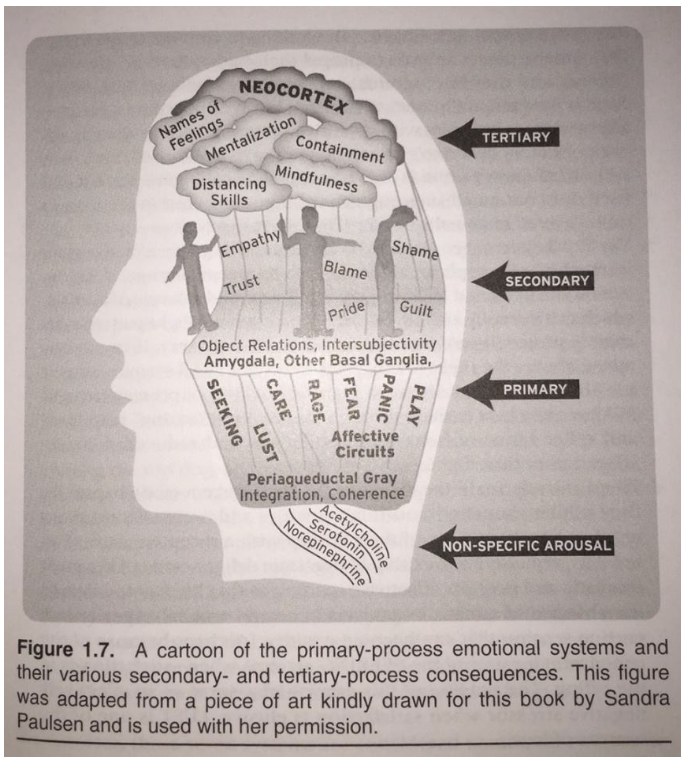Episode 153: Consciousness & Emotion with Mark Solms
By listening to this episode, you can earn 1.5 Psychiatry CME Credits.
Other Places to listen: iTunes, Spotify
Article Authors: Dr. Khrisan Gosai, David Puder, MD
Dr. Mark Solms, Dr. David Puder, and Dr. Khrisan Gosai have no conflicts of interest to report.
Dr. Mark Solms, author of, The Hidden Spring, gives us a guided tour of a journey into different aspects of consciousness, how Freud can be updated with the work of Jaak Pankseep and affective neuroscience, as well as some of the more fundamental principles and groundbreaking work in which he comes to the conclusion that the why, how and where of consciousness centers on our “in the moment” experience of emotions and feelings.
Those working in the field of psychology and psychiatry will find the episode of interest, especially as many of our disorders have aspects of disordered consciousness, such as delirium or dissociation. Those of us who have had a grounding in the fundamental concepts of Freud, but find it lacking when applying these ideas more practically, will be interested in how the work of Jaak Panksepp updates some of the concepts from Freud, namely the drive theory, to give a more updated framework so we can see our patients with more neurobiological underpinnings.
What Do We Know About Consciousness?
Consciousness is generated in the upper brain stem.
It is fundamentally affective (the feelings you are aware of in the here and now).
It is an extended form of homeostasis (our feelings are there to bring us back to safety).
The causal mechanisms of consciousness (in both of its manifestations, neurological and psychological) can be reduced to natural laws detailed in the free-energy principle.
Where Is Consciousness Located?
Dr. Solms notes that the mainstream view of consciousness research is that it is a cortical phenomenon where the brain stem acts more like a power supply, in that it is intrinsic for generating consciousness, but not for any of the qualitative contents of consciousness.
The trouble with this is that children who are born without a cortex (hydranencephaly) as well as decorticated animals do not just have a “blank wakefulness”, devoid of content and quality. Kids with hydranencephaly have a full range of emotional responses and show emotional initiative (Solms & Friston, 2018).
We discuss the differences between different aspects of consciousness such as arousal vs. the actual content or quality of consciousness.
Brain stem regions such as the PAG and the RAS serve to modulate cortical functions; damage to just two cubic millimeters of this region leads to a loss of consciousness.
The consciousness generated by the reticular activating system has a qualitative (what it actually feels like) content of its own; this is what we generally call affect.
Since cortical consciousness is contingent upon brainstem consciousness, affect is revealed to be the foundational form of consciousness. The sentient subject is literally constituted by affect (Solms & Friston, 2018).
I Feel, Therefore I Think, Therefore I Am
The important brainstem regions, which Solms refers to as the “decision triangle” (PAG, superior colliculi, and midbrain locomotor area), receive inputs not just from the cortex as part of its role in modulation, but also from homeostatic error inputs which converge in the PAG.
The work of Antonio Demasio identified feeling with registering states of the body (within a biological scale of values) whereby pleasurable vs. unpleasurable feelings register improving vs. deteriorating chances of survival and reproductive success (Damasio, 2012).
Damasio’s theory was enhanced by the work of Jaak Panksepp, coming to the conclusion that feelings are generated not in the cortex, but the brainstem (and limbic system).
Affect is seen to hedonically valence biological needs so that increasing and decreasing deviations from homeostatic settling points (increasing and decreasing prediction errors) are felt as unpleasure and pleasure, respectively (Solms & Friston, 2018).
This affect is what is felt by the organism and instigates the work that needs to be done to redress the balance (Solms & Friston, 2018).
Affect can be seen as an extended form of homeostasis, which is a basic biological mechanism that arose naturally with self-organization.
Some Nuance On Emotions
Dr. Puder’s work on microexpression can add some nuance to how we conceptualize the felt emotion that Dr. Solms describes vs. a mixture of the conscious and unconscious emotion that is displayed in the form of microexpression. Microexpressions may give us clues to the inner experience of anger, pain, disgust, fear, sadness, contempt, happiness, and even dissociation that may not be “felt” consciously. These feelings can lead people to behave with varying degrees of insight. People with alexithymia are more likely to be psychosomatic and may not be the best at understanding their own emotions or the emotions of others. Dr. Solms mentioned how learning about your emotions can be similar to learning about the varieties of red wine. At first you can just say, “This is a red wine”, but later you can articulate more details about the characteristics of the wine. Many patients initially describe feeling “bad” or “anxious”, but can later describe these emotions with more nuance. We all agree that bringing things to the level of conscious feeling allows for increased choice.
Dr. Solms Updates Freud’s Ideas With Sound Neuroscience
Freud's ideas are still taught in medical school and with varying degrees in psychiatry residencies throughout the country. His ideas are seen as a useful framework in how a lot of what drives our behaviors are outside conscious awareness.
He was severely limited by the technology of the time (even the basics of how neurons worked were still mysterious); he sought a more subjective approach to understanding the inner world of his patients.
Thus, psychoanalysis, which looked at inner work of unconscious conflicts and gave meaning to subjective experiences, was born, whereas neurobiology avoided subjectivity, focusing more on what could be measured and observed.
Eric Kandel, renowned neuroscientist and Nobel Prize laureate noted that, “Psychoanalysis still represents the most coherent and intellectually satisfying view of the mind” (Eric Kandel, 2019).
Dr. Solms has been working on bridging the gap between previous Fruedian theories and updating it with findings from neuroscience. His paper on the scientific standing of psychoanalysis (Solms, 2018) does a good job in summarizing the core scientific claims of psychoanalysis and rebuts the prejudice that it is not “evidence-based.”
Solms argues that Freud got the functional relationship between the “id” (brainstem) and the “ego” (cortex) inverted and it is the id, driven by bodily drives, which produce affects that are felt (Solms, 2013).
Bridging To Affective Neuroscience
Instead of the two drives, Eros and Thanatos, as purported by Freud, there are believed to be seven emotional drives, not discounting the other physical drives such as hunger, thirst etc., although there is some gray area between some of them. There is an overlap, for example, between seeing lust as a physical drive or an emotional one.
Jaak Panksepp coined the term “affective neuroscience” that is accepted today as a unique research area in cross-species brain science, utilizing methods of electrical stimulation, pharmacological challenges, and brain lesions of vertebrate brains (mostly mammalian).
Panksepp carved out seven primary emotional systems. The positive systems are seeking, care, play, and lust, whereas fear, sadness, and anger belong to the negative affects (Davis KL and Montag C, 2019).
Below is a pictorial representation of the hierarchy of primary process systems and their subsequent secondary and tertiary process consequences (Panksepp & Bevin, 2012).
Conclusion
Learning about consciousness being tied to affect helps us understand why, in dissociation, we feel numb and disconnected from our experience. Dissociation occurs to adaptively evade our consciousness: decreased pain, frozen to avoid predators or avoiding overwhelming affects. When patients start their journey in therapy, they feel big categories of emotions, “good” or “bad”, “pleasure” or “anxiety”, but might not know all the varieties of emotions and what drives are behind them. As clinicians, we may see the microexpressions pop on peoples’ faces, yet their conscious experience might be very different. For example, many of my more somatic patients will just feel pain or headaches, when they have much more nuanced combinations of emotions that are inaccessible, like disgust, anger or sadness. It can take 50-60 sessions to learn how to be congruent with emotions. Many psychological defenses pop up to hide our conscious experience from ourselves for various reasons. At times, patients or parents think some of the basic drives are abnormal and pathologize them. For example, the anger system has a role and a purpose, but to parents may seem pathological. The journey to explore with curiosity some of the basic drives in us (seeking, care, play, lust, fear, sadness and anger) can allow us to understand them in their adaptive roles consciously, even having more control regarding our choice to act upon them or consider what is best for our goals and our communities.
Further reading:
Solms, Mark. The Hidden Spring, WW Norton and Company, 2021.
Damasio, Antonio. Self Comes to Mind, Penguin Random House, 2012.
Solms, M. (2013). The conscious id. Neuropsychoanalysis, 2013. 15(1), 5–19.
Other resources:
Ted talk of Jaak Panskepp talking about the 7 emotional systems
https://www.therapyroute.com/article/how-to-do-psychoanalysis-by-m-solms - brilliantly distills why and how psychoanalysis works. He has a series of three great lectures which describes this too.
Nice introduction to psychotherapy in an easy to digest video format
https://mark-solms-in-lock-down.teachable.com/
Connect with Dr Gosai on social media:
Instagram: @kishkash79


